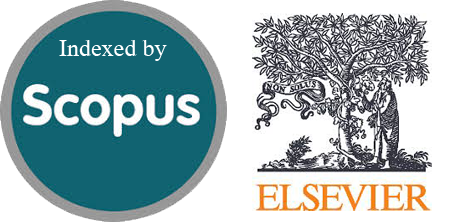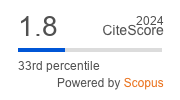Character Recognition of Handwriting of Javanese Character Image using Information Gain Based on the Comparison of Classification Method
Abstract
Indonesia is a country rich in a variety of regional cultures. Regional airspace needs to be preserved so as not to become extinct. One of them is the local culture of Central Java Province, namely Javanese Character. In this modern era, globalization is growing in every country. The impact of globalization is increasingly widespread and developing in society. One effect of globalization is local people prefer foreign language skills to learn local languages. This study, applies the method of character recognition using a new combination workflow that contains Local Binary Pattern (LBP) and Information Gain. Then compare Support Vector Machine (SVM), k-Nearest Neighbor and Naïve Bayes. The LBP method is used to obtain an image's texture or shape characteristics. Information Gain is used for the feature selection algorithm, whereas SVM, k-Nearest Neighbor and Naïve ayes is used for the classification method. From previous research, the information gain method succeeded in increasing the accuracy by 2%. This research compares the SVM classification with another classification method, and the result shows that our proposed can improve classification performance. The best accuracy result using SVM classification gets 87,86%, at ten folds and cell size 64x64.
Downloads
References
F. R. Nur Awalin, “DUNIA BATIN JAWA: Aksara Jawa Sebagai Filosofi dalam Memahami Konsep Ketuhanan,” Jurnal Ilmu-Ilmu Ushuluddin, vol. 5, no. 2, pp. 290–209, Dec. 2017, doi: 10.21274/kontem.2017.5.2.289-309.
M. Diqi and M. F. Muhdalifah, “Design and Building Javanese Script Classification in The State Museum of Sonobudoyo Yogyakarta,” vol. 1, no. 2, 2019.
F. Alotaibi, M. T. Abdullah, R. B. H. Abdullah, R. W. B. O. K. Rahmat, I. A. T. Hashem, and A. K. Sangaiah, “Optical Character Recognition for Quranic Image Similarity Matching,” IEEE Access, vol. 6, no. c, pp. 554–562, 2017, doi: 10.1109/ACCESS.2017.2771621.
S. bin Ahmed, S. Naz, S. Swati, and M. I. Razzak, “Handwritten Urdu character recognition using one-dimensional BLSTM classifier,” Neural Comput Appl, vol. 31, no. 4, pp. 1143–1151, 2019, doi: 10.1007/s00521-017-3146-x.
S. Tian et al., “Multilingual scene character recognition with co-occurrence of histogram of oriented gradients,” Pattern Recognit, vol. 51, pp. 125–134, 2016, doi: 10.1016/j.patcog.2015.07.009.
Y. Sari, M. Alkaff, and R. A. Pramunendar, “Iris recognition based on distance similarity and PCA,” AIP Conf Proc, vol. 1977, no. June, 2018, doi: 10.1063/1.5042900.
S. Santosa, R. A. Pramunendar, D. P. Prabowo, and Y. P. Santosa, “Wood types classification using back-propagation neural network based on genetic algorithm with gray level co-occurrence matrix for features extraction,” IAENG Int J Comput Sci, vol. 46, no. 2, pp. 149–155, 2019.
A. Susanto, D. Sinaga, E. H. Rachmawanto, and D. R. I. M. Setiadi, “Unjuk Kerja K-Nearest Neighbors Pada Pengengalan Karakter Jawa Berbasis Local Binary Pattern,” Prosiding SNATIF Ke -5 Tahun 2018, no. 5, pp. 25–30, 2018, doi: 10.2298/PAN0903301G.
N. Gupta, G. v. Pillai, and S. Ari, “Change detection in Landsat images based on local neighbourhood information,” IET Image Process, vol. 12, no. 11, pp. 2051–2058, 2018, doi: 10.1049/iet-ipr.2018.5524.
L. Xu, Y. Wang, X. Li, and M. Pan, “Recognition of Handwritten Chinese Characters Based on Concept Learning,” IEEE Access, vol. 7, no. 1, pp. 102039–102053, 2019, doi: 10.1109/ACCESS.2019.2930799.
S. Jia, B. Deng, J. Zhu, X. Jia, and Q. Li, “Local Binary Pattern-Based Hyperspectral Image Classification with Superpixel Guidance,” IEEE Transactions on Geoscience and Remote Sensing, vol. 56, no. 2, pp. 749–759, 2018, doi: 10.1109/TGRS.2017.2754511.
Kurniabudi, D. Stiawan, Darmawijoyo, M. Y. bin bin Idris, A. M. Bamhdi, and R. Budiarto, “CICIDS-2017 Dataset Feature Analysis with Information Gain for Anomaly Detection,” IEEE Access, vol. 8, pp. 132911–132921, 2020, doi: 10.1109/ACCESS.2020.3009843.
T. K. Hazra, D. P. Singh, and N. Daga, “Optical character recognition using KNN on custom image dataset,” 2017 8th Industrial Automation and Electromechanical Engineering Conference, IEMECON 2017, pp. 110–114, 2017, doi: 10.1109/IEMECON.2017.8079572.
A. Elmaizi, H. Nhaila, E. Sarhrouni, A. Hammouch, and C. Nacir, “A novel information gain based approach for classification and dimensionality reduction of hyperspectral images,” Procedia Comput Sci, vol. 148, pp. 126–134, 2019, doi: 10.1016/j.procs.2019.01.016.
X. Wang, B. Guo, Y. Shen, C. Zhou, and X. Duan, “Input Feature Selection Method Based on Feature Set Equivalence and Mutual Information Gain Maximization,” IEEE Access, vol. 7, pp. 151525–151538, 2019, doi: 10.1109/ACCESS.2019.2948095.
G. H. Wibowo, R. Sigit, and A. Barakbah, “Javanese Character Feature Extraction Based on Shape Energy,” EMITTER International Journal of Engineering Technology, vol. 5, no. 1, pp. 154–170, 2017, doi: 10.24003/emitter.v5i1.175.
Z. Duan, “Characters recognition of binary image using KNN,” ACM International Conference Proceeding Series, pp. 116–118, 2018, doi: 10.1145/3198910.3234651.
D. DIvyamary, S. Gopika, S. Pradeeba, and M. Bhuvaneswari, “Brain Tumor Detection from MRI Images using Naive Classifier,” 2020 6th International Conference on Advanced Computing and Communication Systems, ICACCS 2020, pp. 620–622, 2020, doi: 10.1109/ICACCS48705.2020.9074213.
W. Widayani and H. Harliana, “Analisis Support Vector Machine Untuk Pemberian Rekomendasi Penundaan Biaya Kuliah Mahasiswa,” Jurnal Sains dan Informatika, vol. 7, no. 1, pp. 20–27, Jun. 2021, doi: 10.34128/jsi.v7i1.268.
Copyright (c) 2023 Jurnal RESTI (Rekayasa Sistem dan Teknologi Informasi)

This work is licensed under a Creative Commons Attribution 4.0 International License.
Copyright in each article belongs to the author
- The author acknowledges that the RESTI Journal (System Engineering and Information Technology) is the first publisher to publish with a license Creative Commons Attribution 4.0 International License.
- Authors can enter writing separately, arrange the non-exclusive distribution of manuscripts that have been published in this journal into other versions (eg sent to the author's institutional repository, publication in a book, etc.), by acknowledging that the manuscript has been published for the first time in the RESTI (Rekayasa Sistem dan Teknologi Informasi) journal ;








